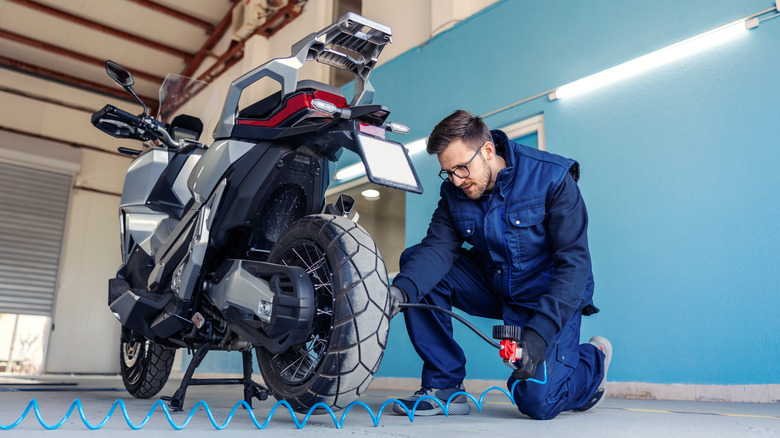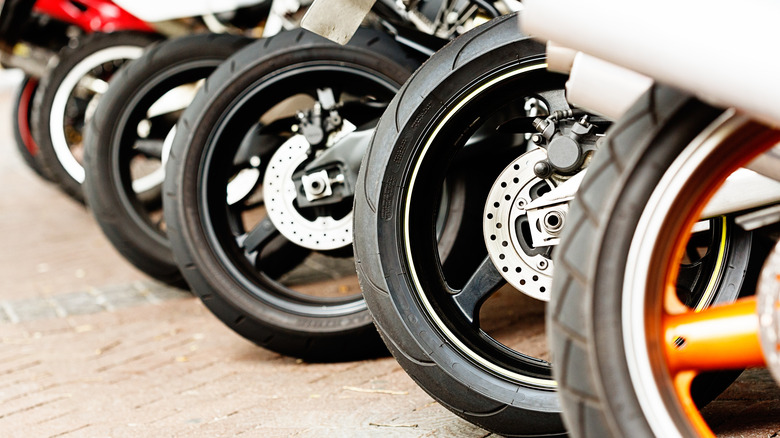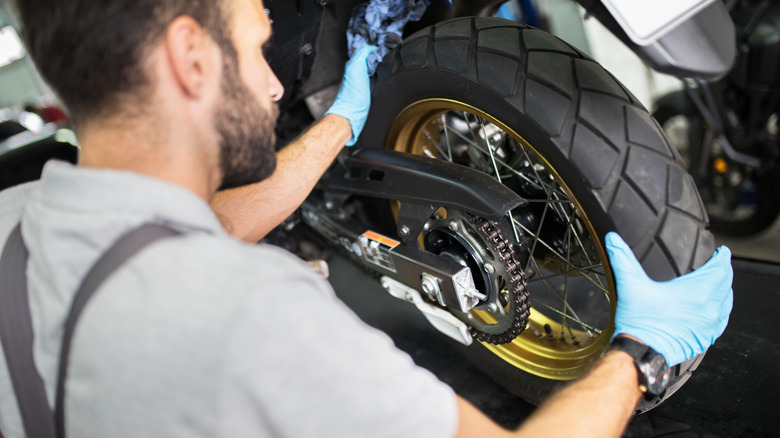How Long Do Motorcycle Tires Last And How Often Should They Be Replaced?
When it comes to safety and performance, tires are arguably the most important part of a motorcycle. That's why every rider needs a general sense of how long they last. Skidding and a loss of traction are just two of the things that can go wrong when your bike's tires are worn down, putting you and others at risk. You won't wake up one day to bald tires. Instead, it's a process that happens slowly, with the rubber tread wearing down little by little every time you go out for a ride. How fast your tires wear out will depend a lot on your riding habits, upkeep, road conditions, and how long the manufacturer designed them to last.
Given all of these variables, there's no hard and fast rule for predicting how long all motorcycle tires will last, although the typical lifespan ranges from 3,000 to 15,000 miles. That's a pretty significant range and doesn't do much to help the average rider predict how long they can go without changing their tires. Along with knowing the ranking of every major motorcycle tire brand, it's important to regularly check your tires for wear and tear and pay attention to warning signs that they're reaching the end of their life.
Motorcycle tire life expectancy depends on key factors
Riding conditions and the type of tires you purchase, among other things, will influence their longevity. For example, sports tires tend to wear out faster than touring tires because they're designed for high-performance and aggressive driving. They last about 2,500 miles under average usage. On the other hand, sport-touring tires are built for longevity and longer distances. They can last up to 10,000 miles in some cases.
Time's also a factor. Even if your tires haven't reached their mileage limit, you should replace them every five to six years. Although your tires may appear fine and still have treads, oxidation can cause the rubber compounds to dry out, having a negative impact on their safety and performance. If you don't know how old your tires are, you can find the manufacturing date stamped on the tire's sidewall. This number on your tire is a four-digit date code that indicates the week and year of production, such as "3419" for the 34th week of 2019.
Factors affecting tire lifespan
Certain riding conditions can speed up the wear and tear on your tires. If you mainly use your bike for urban riding, the frequent stops and starts, along with rough road surfaces, might speed up the aging of your tires. If you spend most of your time on highways with smoother surfaces, your tires should experience more even wear and last longer. The climate where you ride can also have a big impact, with hot weather causing tires to wear out faster due to increased oxidation and softer rubber. The opposite occurs in colder climates. The cold hardens the rubber and reduces traction.
If you live in a rainy climate, you'll want to get the tread depth of your tires checked more often to ensure they're channeling water away effectively to prevent hydroplaning. Ultimately, how long your tires will last within the general ranges depends overwhelmingly on a few key factors: mileage, age, and riding conditions.
Signs it's time to replace your motorcycle tires
Checking your tires regularly for wear and tear will help you notice the signs it's time to replace them. Your first clue will be your tire's tread depth. If it gets too low, your tires will be at an increased risk for flats and blowouts and most likely won't be able to grip the road properly. Once the tread depth goes below the legal minimum, which is 2/32 in most states, you'll need to replace them. You can use a tread depth gauge or this age-old trick called the penny test to measure your tire's tread depth.
Besides the tread depth, physical damage like cracks, bulges, and punctures are all signs that it may be time to change your tires. Just because a crack appears to be minor doesn't mean you should ignore it. Even minor cracks can be a sign that your tire's rubber is wearing out, and that could lead to sudden tire failure in some cases. While you might be able to plug a puncture to the tire tread, sidewall punctures are another matter entirely. If you discover a puncture in this section of your tire, you'll need to replace the tire immediately. If you notice uneven wear, that's also a good indicator you need to replace your tires.



